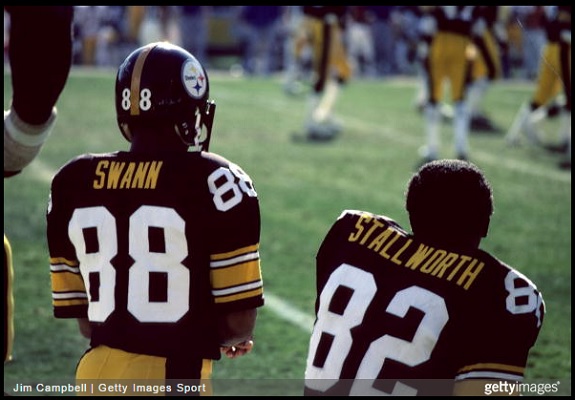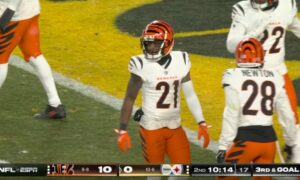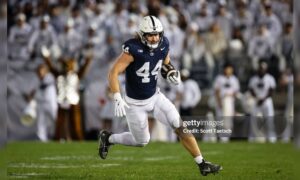Another series, a collaborative one, to take you through the remaining weeks of the offseason. Jon Ledyard and I will pick a side in choosing the greatest Pittsburgh Steelers at each position. Tell us who is right and who won the debate – those don’t have to be the same answer – in the comments.
Today brings us one of the toughest debates – choosing the best wide receiver. Jon selects Hines Ward, I take Lynn Swann.
JON:
As Pittsburgh Steelers fans, we’re blessed to have no shortage of fan-favorites in our team’s history. From the 1970’s dynasty led by players like Joe Greene, Jack Lambert, and Mel Blount, to the present-day roster with players like Heath Miller and James Harrison, Pittsburgh has had no shortage of fantastic personalities and dominant players over their many years of existence.
But perhaps no player has an affinity with the Pittsburgh fanbase quite like Hines Ward, whose infectious smile and violent playing style were the perfect representation of Steeler football. A third round pick in 1998, Ward wasn’t expected to become the face of the Steelers franchise, but in many ways that is exactly what he did over a marvelous 14-year career, each season of which was spent with the Black and Gold. Ward’s full-tilt playing style meshed well with the city, and it wasn’t long before the Georgia product was sporting one of the most-worn jerseys in Pittsburgh.
But it wasn’t just Ward’s popularity that made him the greatest wide receiver in Steelers history, instead it was an annually-underrated stable of physical abilities that allowed him to dominate the gridiron. No one would claim Ward was the fastest or biggest receiver in the league, but he may have been the most sure-handed. Ward had only 60 drops in 1,559 career targets, for a remarkably low drop rate of 3.8% over the course of his long tenure in the NFL.
That’s not even getting into his production, by far the finest in Steelers history with 1,000 catches, 12,083 yards, and 85 touchdowns. The next closest? John Stallworth, with 537 catches, 8,723 yards, and 63 touchdowns. Talk about winning in a landslide. You’ll find the great Lynn Swann down in fifth place, well behind the likes of even Miller in receptions and yards.
But despite Ward’s first place ranking in every major receiving category, it really was the way he played the game that so endeared the energetic wide receiver to the city of Pittsburgh. Ward’s wide smile portrayed a deceivingly laid back demeanor that didn’t always match the ferocious intensity with which he played the game. Who can forget the absolutely devastating block on Ed Reed, maybe the most violent collision I’ve ever seen in a game? Or the peel-back block Ward hit on Bengals linebacker Keith Rivers, breaking his jaw? It was the selfless, physical, team-first attitude Ward displayed in Pittsburgh that made him one of the best blocking wide receivers ever to play the game.
And oh how the Ravens hated him, and the Bengals. Ward constantly brought his A-game for the biggest moments, and was a huge reason why the Pittsburgh-Baltimore rivalry was the best in football during his career. Ward had his spats with Reed, Ray Lewis, Bart Scott and others, but he never backed down despite being a fairly undersized receiver at just 6-0, 205 pounds. Ward’s top-notch competitive nature and play-to-the-whistle mentality carried over to the rest of the team, helping maintain the violent demeanor that has long epitomized Pittsburgh football.
There really wasn’t anything Ward didn’t accomplish in his career, winning the Super Bowl twice, garnering Pro Bowl honors four times, gaining widespread respect (and hatred) around the league, becoming one of the most loved players in Steelers history, and, oh yeah, leading the franchise in just about every area of production you could ask for. To do all this for one team in 14 years is an incredible accomplishment, but to do it without being a top-tier athlete or having blazing speed or a pass-happy offense for most of his career? There simply were never any odds that could hold Hines Ward, or keep him from becoming the greatest wide receiver a well-storied Pittsburgh franchise has ever seen.
ALEX:
This is a difficult choice, a good problem to have, because there are so many deserving candidates. Lynn Swann, Hines Ward, John Stallworth, heck, by this time next year, you will be able to make a strong case for Antonio Brown.
But there can only be one choice. And that is Swann. It’s funny because he didn’t have the gaudy statistics like Stallworth or Ward. If this is solely a box score debate, Swann is a distant third in the conversation.
But Lynn Swann didn’t need volume. He didn’t need longevity. He played, exceled, and then he left. The recurring theme I’ve had, and I hope I’m not overdoing it, is a nod to the players that brought the Steelers their first championships. It’s important to remember Swann nor Stallworth had a major hand in the initial victory in 1974. Randy Grossman caught more passes than 88 in the regular season and the Hall of Fame receiver didn’t have a single reception in Super Bowl IX. Stallworth was similarly quiet. But Swann was a crucial special teamer, funny to use that as the lead phrase for a Hall of Famer, who led the league in punt return yardage in 1974.
But it was that ’75 season where Swann really shined. Rather, Super Bowl X. The famous leaping catch, which don’t forget, wasn’t even a drive that came away with points. Still, it’s arguably the single most iconic play in Super Bowl history. And in a moment, sums up the acrobatic, graceful how-did-he-do-that player Swann was.
He would go on to catch four passes for 161 yards and a touchdown in the win. Terry Bradshaw only completed nine passes that day, the other receivers combining for 48 yards.
Stallworth in that game? Two catches for eight yards.
This was just two weeks after getting concussed by the Oakland Raiders George Atkinson, carried off the field by Joe Greene. Swann is grace personified but that was toughness.
Don’t get me wrong. Stallworth was dominant in the team’s Super Bowl wins in 1978 and 1979, catching a touchdown pass in every playoff game. But Swann was no slouch either, doing the same sans one game.
Swann was named to the first-team 1970s All-Decade team. Stallworth was not. Swann was a Super Bowl MVP on a team riddled with future Hall of Famers. Stallworth was not. Swann was inducted into the Hall of Fame in 2001, Stallworth had to wait another year. Those are the people who saw him play and have all decisively claimed 88 to be the better of the two.
So do I.








